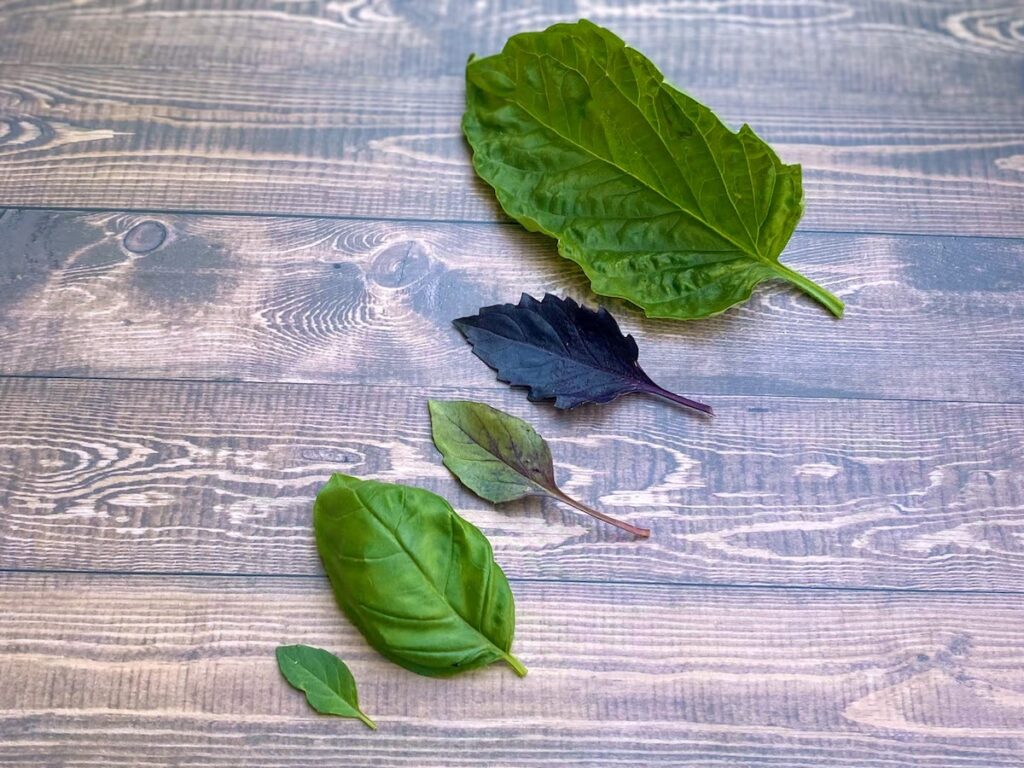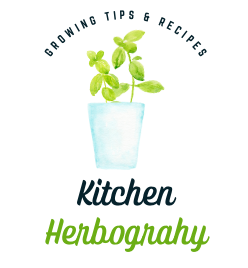As an Amazon Associate I earn from qualifying purchases. This website also participates in other affiliate programs and may earn commissions if you shop through the links used on this website.
(This article was originally published on August 10, 2022 and was last updated on August 10, 2022)
With their strong, inviting aroma and interesting taste, herbs can provide an enriching and healthy treat for most rabbits. But cautious rabbit parents want to know…can rabbits eat basil?
In this article, we’ll go into basil safety for rabbits, including what to be aware of if your rabbits eat basil stems, eat fresh basil leaves, or try to lick your basil-containing dinner.
Can Rabbits Eat Basil?
Yes, rabbits can eat basil in an appropriate amount. A basil plant can be safe for rabbits in moderation, so long as you follow some basil guidelines around feeding basil to rabbits.

As is always the case when introducing new food to rabbits, it’s important to know how, when, and how much basil your rabbit can safely consume.
This article will “hop” through the basics of giving basil to rabbits and cover the following:
- Basic information about a rabbits diet, and how to achieve a balanced diet.
- Nutritional benefits and risks of basil in a rabbit’s daily diet.
- How can rabbits eat basil, including how much basil, how often, and how to serve it.
- Common problems related to digestion and a rabbit’s health.
- Other herbs suitable for rabbits to enjoy eating.
Before we begin, we’ll also give some background information about how rabbit digestion works.
So, let’s jump in!
DISCLAIMER: This blog post is not intended to be veterinary or professional advice. If in doubt, speak with your veterinarian about your pet.
How Does a Rabbit’s Digestive System Work?
Rabbits, like another of our furry friend species – the Guinea Pig – (and unlike cats and dogs) are hindgut fermenters.
This term refers to the part of the gastrointestinal system where a rabbit’s food is organized and digested.
The 2 main parts of a rabbit’s diet which are important here are the ‘indigestible’ and ‘digestible’ parts.
Indigestible Things Rabbits Eat
A rabbit is not able to digest hay but it is still extremely important. Hay is a source of dietary fiber for rabbits, and makes up the indigestible part of a rabbit diet. Its job is to keep everything moving along the gastrointestinal tract.
Fiber moves through the section of the gastrointestinal tract called the ‘colon.’ In rabbits, the colon can separate the indigestible and digestible components of the food they consume.
Non-digestible fiber (such as hay) is quickly returned to the rabbit’s environment in hard and small fecal pellets.
The Digestible Things Rabbits Eat
The second ‘digestible part’ of a rabbit diet is directed into another, highly specialized area of the digestive system called the ‘cecum’.
Within the cecum, there are special bacteria that work to break down the digestible fraction of their diet. This helps a pet rabbit obtain the energy and nutrients they need from their food.
After this part of the diet has finished its process in the cecum, this material also carries on into the environment and is passed as fecal pellets. But when it gets there, there’s a key difference.
You might have heard that rabbits are known to show a behavior called ‘coprophagy’. This involves rabbits eating their poop, so that it can be re-digested again to maximize the ability of its nutrients.
These small pellets which are the result of the digestion process in the cecum are covered in mucus. These mucus-covered pellets can be re-digested (e.g. eaten again!) by the rabbit to make sure any small, remaining quantities of nutrients left within them are captured for the bunny’s benefit.
But why do they have mucus, you may ask?
The mucus has a special role in protecting these pellets as they enter the stomach again, as the acid inside the stomach can damage any remaining nutrients.
Whether you think coprophagy is pretty cool or pretty gross, it’s very important for our furry friends.
Key Points to Remember About Rabbit Digestion
In a nutshell, in addition to providing them with all the essential nutrients they need, a rabbit’s diet must:
- Provide enough dietary fiber in large quantities to keep everything moving
- Support a rabbit’s natural microbiota within the cecum
Now you know the most important roles of a rabbit’s diet, let’s see what can go wrong and how a pet owner can help keep their rabbit healthy!
Gastrointestinal Problems in Rabbits
Gastrointestinal problems are fairly common in rabbits, and there are a few common issues.
The signs of gastrointestinal disease in rabbits can look quite similar, no matter the cause.
Below is a list of signs which could indicate that a rabbit has a gastrointestinal related problem:
- Weight loss
- Appetite loss
- Poor hair coat
- Behavioral changes
- Inappropriate chewing
- Foul or pungent smelling poop
- Decrease in the amount of poop passed
- Diarrhea and stains around their bottom
Gastrointestinal Stasis
In the previous section we talked the roles of non-digestible fiber. When the components of a rabbit’s diet don’t move at an appropriate pace through their body, it’s called ‘gastrointestinal stasis’.
As a result, a rabbit can become dehydrated or they can even get a blockage (stasis). Something that further complicates this situation for rabbits, is that this stasis often causes them to lose their appetite, which means they no longer eat the fiber they need to eat to promote movement, and makes the problem become even worse.
Some causes of GI stasis are:
- Pain
- A new food, maybe one that was introduced too quickly (hence, the need to introduce basil leaves appropriately)
- Not enough fiber in the diet
- Eating something toxic or foreign
- Sudden changes such as weather, in the environment, diet or housing
GI stasis is a serious condition which can progress rapidly and be fatal if not treated. If you think your rabbit is unwell it’s important to discuss it with your vet as soon as possible.
GI Obstruction
One of the complications of the GI stasis mentioned above is when movement in the gastrointestinal system slows so much it stops completely. If you notice any of the changes we described above, it’s best to check it with your vet as GI obstruction is considered a surgical emergency.
Rabbits have a natural need to groom themselves often. Normally after cleaning themselves, this hair passes through the digestive tract and out via their poop.
However, sometimes if they swallow too much hair or it builds up it can become stuck.
This means that hairballs in rabbits are a common cause of a gastrointestinal blockage.
This problem can be quite hard to diagnose, but if you notice any of the signs related to gastrointestinal problems in rabbits above, it’s best to contact your veterinarian.
Infectious Diseases
Infectious diseases affecting the gastrointestinal system of rabbits can be bacterial, viral, parasitic and some can even be passed on to humans.
The best chances of treating these diseases are when they are caught early.
Don’t hesitate to call your veterinarian if you notice any of the changes discussed above.
How to Feed Your Bunny Basil
Some rabbits love basil, but its strong flavor isn’t for all bunnies’ taste. When adding anything new to your pet’s diet it’s best to take plenty of time and introduce basil in small quantities.
The following section covers how to add basil to your bunny’s diet. Worth noting, there is no need to cook basil for your bunny. Always be sure to feed only fresh basil leaves or stems, and only pure basil – nothing that’s been made into a human recipe.
Watch for Allergies
Did you know that even our pet rabbits can have allergies too?
This means that pet parents should introduce basil to rabbits slowly to check for any allergic reactions such as:
- Itching
- Bloating
- Hair loss
- Appetite loss
- Skin changes
- Licking their feet
- Diarrhea or runny stool
- Poor haircoat condition
- Scratching their back end
- Lethargy (becoming more tired than normal)
Feed Basil in Small Quantities that are Fresh, Clean and Organic
Start by giving rabbits up to a couple of bites of basil to try the leaves before including it regularly in their diet.
And don’t forget to wash it first! If possible, also try to give them fresh basil which is organic – which could mean grown from seed in your garden, on your patio, or indoors, without any pesticides or sprays!
After 24 hours have passed without any signs of allergies or gastrointestinal upset, feel free to add more basil – alongside other fresh greens – in your rabbit’s diet.
Risks and Benefits of Basil in a Rabbit’s Diet
Once pet parents have ruled out the chances of an allergic reaction, there are many benefits rabbits can enjoy when they eat basil.
From anti inflammatory properties to helping prevent kidney problems, let’s read how basil can contribute positively to a rabbit’s health.
Vitamin C
Vitamin C is an important antioxidant which is good for almost all of a rabbit’s tissues. Rabbits can also suffer from ‘Scurvy’ (like Guinea Pigs) and enough vitamin C is key in its prevention.
Vitamin K
Basil contains Vitamin K, which is another antioxidant. In addition, it helps a rabbit’s bones and immune system work efficiently.
Vitamin A
The vitamin A in basil is helps rabbits eyes to stay healthy.
Potassium
Basil has lots of this mineral which is known to decrease the chances of kidney stones.
Even with many health benefits, don’t be tempted in overfeeding basil as there are plenty of even more healthy alternatives!
Which Types of Basil Can a Rabbit Eat?
Most types of basil are a cultivar of Ocimum basilicum, and rabbits are safe to eat these varieties. These include Genovese basil, thai basil, cinnamon basil, and others.
Sweet Basil is the Most Common Type of Basil
If you’re growing basil at home or picking up a plant from the supermarket, it’s most likely sweet basil, or ocimum basilicum. Sweet basil has a pungent smell that your bunny may or may not like.

Lettuce Basil is a Great Option for Bunnies
Lettuce basil has large crinkly leaves, similar to lettuce. If you want to feed basil to your bunny that you grow at home, lettuce cultivars are a nice option for you and your bunny.

Can all Rabbits Eat basil?
Baby rabbits (below the age of 3 months) are still developing their digestive system.
For this reason, pet parents should avoid feeding fresh vegetables and fruit and herbs until they are older and this system is developed fully.
In the same way as we explained earlier, basil and other fresh food can be introduced to adult rabbits.
How Often is Feeding Basil Safe for Rabbits?
So long as it’s part of a healthy diet, rabbits can be fed basil (stems and leaves) up to a couple of times a week.
A rabbit should have approximately 1 packed cup of fresh fruits vegetables per 2 pounds of body weight per day. Around 75% of that “fresh fruits and vegetables” portion of a rabbit’s diet should be leafy greens, and basil can be added to that portion of their diet.
The biggest issue with feeding your rabbit more basil than suggested is that it replaces some of their hay consumption. Adequate hay is critical to a healthy rabbit, so be sure your pet keeps up with their hay diet if you add basil in.
Basil is considered low in oxalic acid.
What Should I Feed to Keep my Rabbit Healthy?
The bulk of a rabbit’s diet should be made of good quality hay and grass, with fresh foods (vegetables – especially leafy greens – and limited fruits) added in amounts appropriate for the rabbit’s body weight.
Of the fresh foods portion of your rabbits diet, leafy greens (in particular low oxalic acid leafy greens) should form about 75% of it, and non-leafy greens, such as broccoli, peppers, brussel sprouts, can make up about 15% of the “fresh foods” portion of food.
Rabbits can also enjoy some fresh fruit in a treat-sized portion – no more than 10% of their diet. Don’t be tempted to feed more fruit as it can cause the blood sugar level to be too high.
Always be sure that rabbits have access to plenty of fresh water.
Final Thoughts
So now you know how rabbits can safely enjoy the health benefits of basil.
Has your rabbit discovered a favorite new food or herb recently? Tell us about it in the comments below!
Originally from the UK, Charlotte is an undergraduate veterinary medicine student who will graduate in 2023 from the University of Zagreb, Faculty of Veterinary Medicine. She is a volunteer at her university’s obstetrical clinic, equine clinic and an editor of her university’s scientific journal. She loves to travel and has undertaken internships in veterinary institutions in Belgium, Austria and Spain outside of her veterinary medicine studies within an international program in Croatia. In her spare time she loves taking long walks with her 13-year-old dog Chiki and cooking (basil is one of her favorite herbs!)

